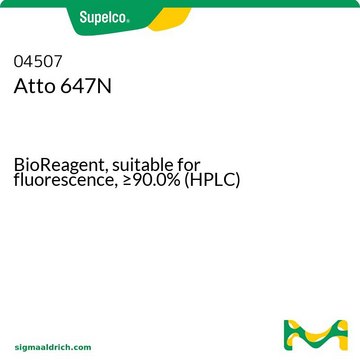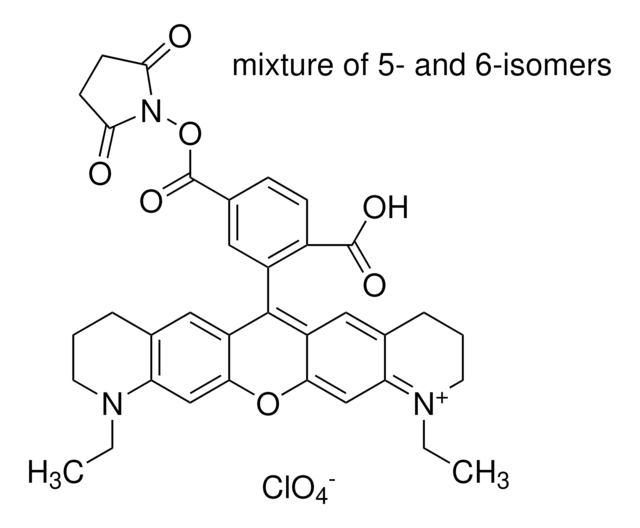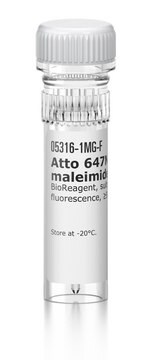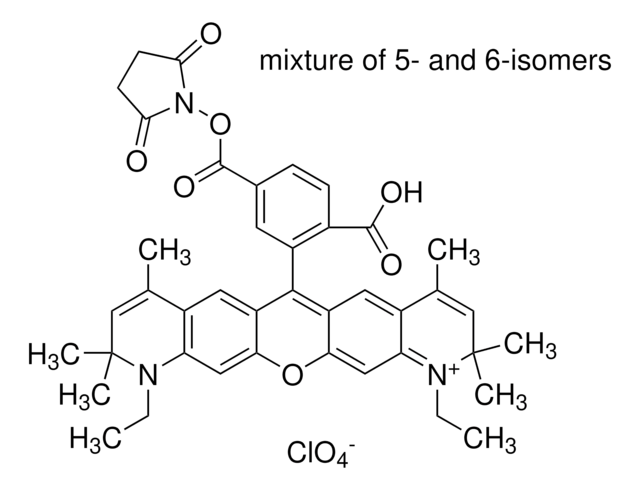18373
Atto 647N NHS ester
BioReagent, suitable for fluorescence, ≥90% (HPLC)
About This Item
Recommended Products
product line
BioReagent
Quality Level
Assay
≥90% (HPLC)
≥90% (degree of coupling)
form
solid
manufacturer/tradename
ATTO-TEC GmbH
λ
in ethanol (with 0.1% trifluoroacetic acid)
UV absorption
λ: 641-647 nm Amax
suitability
suitable for fluorescence
storage temp.
−20°C
Related Categories
General description
Application
Legal Information
related product
Storage Class Code
11 - Combustible Solids
WGK
WGK 3
Personal Protective Equipment
Regulatory Listings
Regulatory Listings are mainly provided for chemical products. Only limited information can be provided here for non-chemical products. No entry means none of the components are listed. It is the user’s obligation to ensure the safe and legal use of the product.
JAN Code
18373-50MG-F:
18373-5X0.24MG-KC:
18373-0.24MG-F:
18373-VAR-F:
18373-1VL-F:
18373-1MG-F:
18373-0.24MG-KC:
18373-0.24MG-FREE:
18373-1MG-BULK-F:
18373-5MG-F:
18373-BULK-F:
18373-5X0.24MG-F:
Certificates of Analysis (COA)
Search for Certificates of Analysis (COA) by entering the products Lot/Batch Number. Lot and Batch Numbers can be found on a product’s label following the words ‘Lot’ or ‘Batch’.
Already Own This Product?
Find documentation for the products that you have recently purchased in the Document Library.
Customers Also Viewed
Our team of scientists has experience in all areas of research including Life Science, Material Science, Chemical Synthesis, Chromatography, Analytical and many others.
Contact Technical Service




